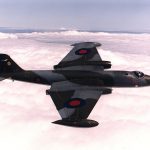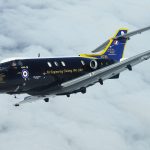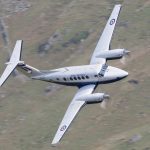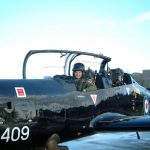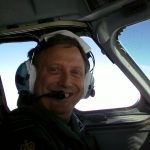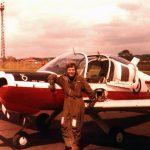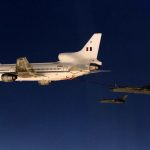IRT Debrief Digest – Capt Steve Oddy – September 2023
Standards Document 1.
All applicants should have read a copy of Standards Document 1 V11. Instructors should bring the existence of Standards Document 1 to all of their students’ notice.
RNAV Substitution.
Standards Document 1 explains the extent to which RNAV Substitution may be used on an initial IRT. For example:
- If the holding beacon has been substituted by a GNSS waypoint, the examiner will deny access to the MFD map and will require entry and maintenance of the hold to be carried out using a single-needle display (if fitted and available).
- Steering information around the hold generated by selecting ‘Hold At Waypoint’ when using a G1000NXi or equivalent will be denied.
- Overlay steering information will be denied from entry to the approach base turn.
Flying an overlay approach does not satisfy the requirement that one of the approaches must be an RNP approach
Pre-test Preparation.
We know that the day of the IR will be one of the most stressful in the applicant’s life. ATOs can minimise the stress levels by briefing the applicant on what to expect and also by making sure that all of the paperwork that the examiner will need to see is available, fully and accurately completed and signed where necessary.
IRT Profiles.
The idea that the IRT has a ‘standard profile’ is incorrect. All IRTs now require that an RNP approach is flown; one approach will be an RNP approach and the other will normally be a procedural approach. Whether the 3D or the 2D approach is carried out asymmetric will depend on the availability of approaches and the decision of the examiner.
The 2D approach may be an RNP, NDB, VOR or localiser only approach at the examiner’s discretion; the 3D approach may be an ILS approach or an RNP approach (if the aeroplane is so capable).
One approach will be non-RNP; the hold will always be based on a VOR, NDB or RNP fix associated with an approach, and will require single-needle tracking (if the aeroplane is so capable). RNAV Substitution (with some restrictions) may be used for the hold and the non-RNP approach – see above. Note that an LNAV+V approach is not a 3D approach.
NOTAMs.
The full route, including the diversion and the return to base, must be checked; the NATS system does not automatically look at the leg to a diversion airfield. Whilst a narrow route brief is appropriate, limiting NOTAMs to a 10nm corridor can result in important items being missed. For partials, a point brief may be more appropriate. If there is a NOTAM, such as para dropping or a gliding competition, which will significantly affect routing then any contact phone number or R/T frequency in the NOTAM should be used to confirm whether the activity is actually taking place at the time of the flight.
RAIM.
If it is planned to fly an RNP approach, RAIM should be checked as part of the pre-flight preparation. Even if SBAS is available, it is prudent to check RAIM in case of any subsequent SBAS failure. Applicants should understand the difference between FD and FDE.
Flight Plans.
Since October 2012 there has been a requirement for additional information about RNAV/GPS equipment to be included in Section 18. CAP 694 explains this; the transponder built into the G1000 merits more than ‘S’ in Item 10. Details of how to do this for the Seneca V are given on this website on the Flight Plans page.
Safety Altitude.
Not all applicants have any understanding of IFR outside CAS. Specifically, the application of safety altitude is misunderstood. Some applicants are using the MEF or MSA figures on their charts for calculation of SA rather than complying with the requirements of their Operations Manual (of which they also have little knowledge). The use of MEF or MSA might be sensible when executing an unplanned diversion but is not acceptable for a pre-planned IFR flight.
Electronic Forms.
Electronically produced M&B schedules are acceptable but applicants should be prepared to be asked questions on them, such as “We’ve got another passenger now; what effect will that have?” Applicants must make sure that any ballast shown on the electronic form is actually in the aircraft (or vice versa). Many applicants are unaware of the weight limit in the Seneca rear hold. An electronic PLOG can be used if in accordance with the Ops Manual. PLOGs must be completed during the planning process on the day of the test and must not be modified to contain extraneous items such as skeleton clearances, checklist reminders and approach airfield details.
Instrument Minima.
Applicants are correctly adding the allowance recommended by the UK AIP to the 3D approach DA but not all actually know why they are doing it. Applicants should also remember that they may need to apply a factor to DA, MDA and ACA plus any step-down fixes if forecast temperature at the destination is 0°C or below. Minima should be calculated iaw FCL Part-CAT or Part-NCO as appropriate and the associated AMCs and GMs, and as required by the UK AIP. If a CDFA is to be flown on the 2D approach, then a descent allowance for the go around must be stated. Some applicants are unaware of the minimum RVR for single-pilot operations.
MDA Changes.
There have been NOTAMs over the years which temporarily raise the MDA at some airfields but no mention is made of the RVR. The AMCs to Part-CAT and Part-NCO tabulate the relationship between MDH and RVR and this may require an increased RVR to be used. Changes to and unserviceabilities of approach lighting will have a similar effect.
Tech Log.
If we are taking an aircraft on the first flight of the day we will expect the person who has carried out the ‘A’ check to have signed for it. We will ask questions on the Tech Log as we have found patchy understanding of it despite applicants already holding a class rating. We expect applicants to have checked the Tech Log thoroughly and be familiar with the layout of the Certificate of Release to Service. Tests have been lost or delayed because applicants have failed to notice OOP items that are imminent or even overdue. We also expect applicants to have read through and thought of the implications of the deferred defects, especially in relation to the actual weather conditions for the IR. There is a generally poor understanding of the workings of electric propeller anti-icing systems, especially with regard to the implications of a ‘low sector’. See the notes regarding the Seneca V Prop De-Ice system on this website.
Performance.
Most ATOs training for the IR use ‘public transport factors’ although individuals undertaking a competency based IR may be guided instead by the Skyway Code. There is still confusion regarding weather conditions for arrival planning and public transport factors; in particular, Part-CAT requirements regarding temperature, wind and slope for the destination when despatching an aeroplane are not well understood. Some applicants often have the benefit of knowing where they are going for some considerable time but they are not always making best use of their planning time. We only require the performance and mass & balance calculations that are needed for the planned flight:
- mass and balance at take-off with a projected line showing m & b for the rest of the flight (or to zero-fuel).
- take-off performance related to base.
- landing performance related to our planned destination or for the intended diversion if it is obvious that this would be the most limiting case – for example destination of Birmingham, diversion of Gloucestershire.
Whilst most applicants calculate TODR and LDR correctly, many have not checked these against the actual runway available and have no idea whether they should use TORA, TODA, ASDA or LDA which makes the calculations meaningless. Even those who try to do this may have used the distance written alongside the runway on the airfield diagram rather than the figure from the table in the AIP resulting in errors of 400 metres or more in the case of Gloucester. All we want to check is a real-world understanding of these calculations and their implications. Electronically produced performance charts are acceptable but, again, applicants must have an understanding of the data they are presenting.
Weather.
Applicants are expected to give a weather briefing. It is apparent that a number of them cannot correctly decode a TAF – not many know exactly what TEMPO or CAVOK mean. They are also often confused with regard to cloud-base height vs altitude and with the conditions causing an approach ban. The decoding of the area chart F215 has also been problematic with misunderstandings regarding cloud types, bases and thickness. When conditions are marginal, few have considered the need for a take-off alternate. Presenting METARs that are over 4 hours old as the actual departure weather shows a lack of common sense.

